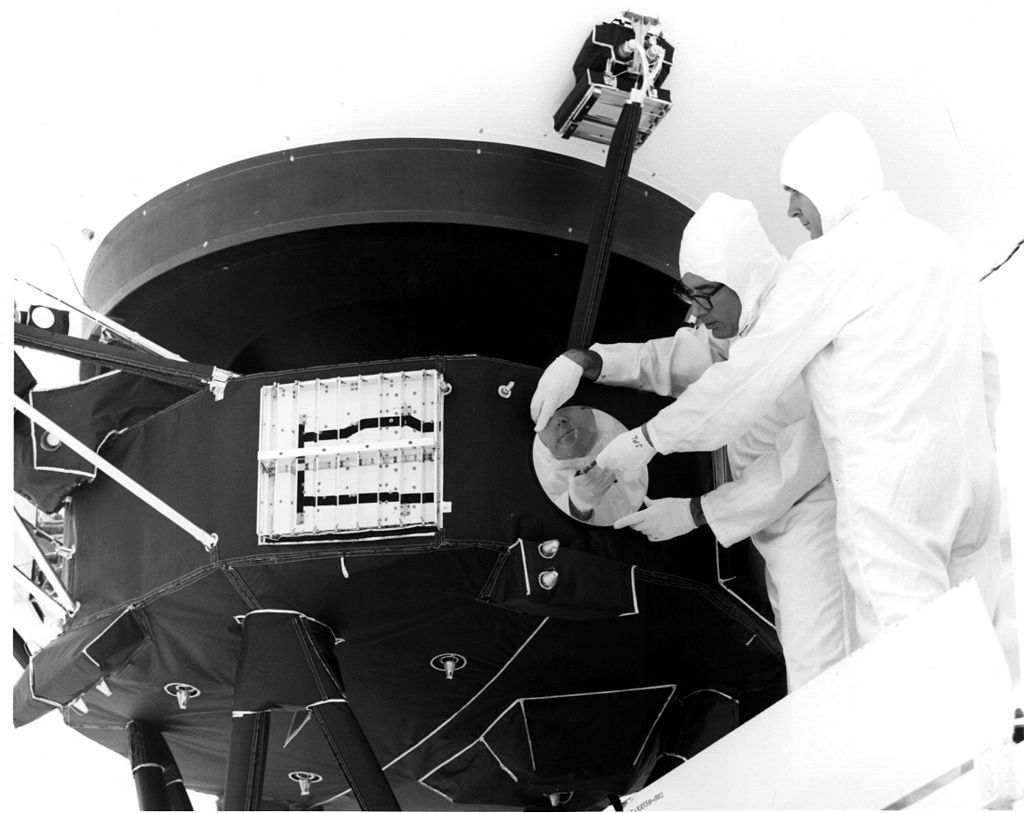
- #GOLDEN RECORDS ON VOYAGER HOW TO#
- #GOLDEN RECORDS ON VOYAGER FULL#
- #GOLDEN RECORDS ON VOYAGER DOWNLOAD#
We the inhabitants of this earth send our greetings to youĬhân thành gửi tới các bạn lời chào thân hữu Hum zameen ke rehne waalon ki taraf se aap ko khush aamdeed kehte hain. Greetings to you, whoever you are we have good will towards you and bring peace across space Salvete quicumque estis bonam erga vos voluntatem habemus, et pacem per astra ferimus Greetings / Hail! (literally "in goodwill") Hello to everybody from this Earth, in Quechua language Kay pachamamta niytapas maytapas rimapallasta runasimipi Selamat malam hadirin sekalian, selamat berpisah dan sampai bertemu lagi dilain waktu We in this land have sent you warm greeting to you all Pûak rao nai torránee née kŏr sòng mít jìt maa tĕung tâan túk kon) How's everyone? Wish you peace, health and happiness 各位好嗎?祝各位平安健康快樂。 Gok 3 wai 2 hou 2 maa 1? Zuk 1 gok 3 wai 2 ping 4 on 1 gin 6 hong 1 faai 3 lok 6.

We come in friendship to those who are friends. ( Hoitines pot'este chairete! Eirēnikōs pros philous elēlythamen philoi.) This is a list of the recorded greetings in order of appearance on their respective tracks. The whale sounds were provided by Roger Payne. Later audio sections contain the spoken greetings by the United Nations delegates in the remaining four languages, including Esperanto and !Kung. It includes four Chinese varieties (marked with **), 12 South Asian languages (marked #) and five ancient languages (marked §), listed here in alphabetical order: The number of native speakers of these 55 languages combined (excluding L2 speakers) is over 4.7 billion people, comprising over 65% of the world population. The original plan was to use greetings made by United Nations delegates, but various problems with these recordings led to new recordings being made at Cornell University by people from the foreign-language departments. The second audio section ("Greetings in 55 Languages") contains spoken greetings in 55 languages. I wonder whether the aliens who get this message will serve us.The first audio section contains a spoken greeting in English from then- Secretary-General of the United Nations Kurt Waldheim.
#GOLDEN RECORDS ON VOYAGER DOWNLOAD#
Why can't I download the audio? Comment by Greg Listening to this by the camp fire Comment by Marcin WolniewiczĬan this be available for download please? Comment by kevinjudd1994
#GOLDEN RECORDS ON VOYAGER FULL#
Both formats include a book featuring all of the original images printed in full color. The Voyager Golden Record is now available from as a 3xLP vinyl box set or CD package. Here is the video of his results and explanation of the process: On September 5, 2017, the 40th anniversary of Voyager 1's launch, Boing Boing published Ron Barry's article about how he successfully decoded the Voyager Record's images from this audio file. Also note that in order to conserve space on the original Golden Record, half of the images are encoded in the left channel and half in the right. While the audio was digitally transferred at 15 inches per second as per the reel's box, the correct speed for playback and decoding should be twice that.

This audio file came from the original master tapes from 1977.
#GOLDEN RECORDS ON VOYAGER HOW TO#
A diagram on the aluminum cover of the Golden Record explains how to play the phonograph record and decode the images. Donating their time and expertise to the project, engineers at Colorado Video projected each Voyager slide onto a television camera lens, generating a signal that their machine converted into several seconds of sound per photo. While flipping through an electronics catalog, Valentin Boriakoff, Drake’s colleague at the National Astronomy and Ionosphere Center, stumbled upon Colorado Video, a small television equipment firm in Boulder that had built a unique device for encoding television images as audio signals that could be transmitted over telephone lines. The challenge was finding technology capable of the task. Technical director Frank Drake had always planned to encode the photos in the audio spectrum for the record. Attached to each spacecraft is a golden phonograph record containing Earth's greatest music, spoken greetings, "Sounds of Earth," and more than 100 images encoded as audio signals, a technological feat at the time. In 1977, NASA launched Voyager 1 and 2 on a grand tour of the solar system and into the mysteries of interstellar space.


 0 kommentar(er)
0 kommentar(er)
